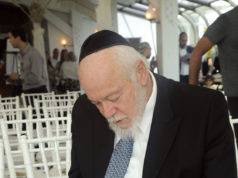
As a result of the Inquisition, many Sephardim left the Iberian Peninsula at the end of the 15th century and throughout the 16th century, in search of religious freedom. Some of them found their way to the newly independent Dutch provinces.
Many of the Jews who left for the Dutch provinces were actually crypto-Jews, Jews who had converted to Catholicism but continued to practice Judaism in secret. Several of them ‘returned’ to the Jewish religion after they had settled in the Netherlands.
Amsterdam became one of the most favored destinations for Sephardic Jews in the Netherlands, and because many of the refugees were traders, Amsterdam benefited greatly from their arrival. However, the reason to settle in Amsterdam was not merely voluntary; many crypto-Jews, or Maranos, had been refused admission in trading centers like Middelburg and Haarlem.
Under the influence of Sephardic Jews, Amsterdam grew rapidly. The relations between the Dutch and South Americans were established by Sephardic Jews; they contributed to the establishment of the Dutch West Indies Company in 1621.
The ambitious schemes of the Dutch for the conquest of Brazil were carried into effect through Francisco Ribeiro, a Portuguese captain, who is said to have had Jewish relations in Holland.
Some years afterward, the Dutch in Brazil appealed to Holland for craftsmen of all kinds, many Jews went to Brazil; about 600 Jews left Amsterdam in 1642. In the struggle between Holland and Portugal, for the possession of Brazil, the Dutch were supported by the Jews.
The Jews of Amsterdam also established commercial relations with various countries in Europe. Besides merchants, a great number of physicians were among the Spanish and Portuguese Jews in Amsterdam. Jews were admitted as students at the university, where they studied medicine.
In 1675, the Esnoga (Sephardic synagogue) in Amsterdam was inaugurated. The synagogue is still in use today. The Sephardic cemetery Beth Haim in Ouderkerk aan de Amstel, a village on the outskirts of Amsterdam, has been in use since 1614 and is the oldest Jewish cemetery in the Netherlands. Another reminder of the Sephardic community in Amsterdam is the Huis De Pinto, a residence for the wealthy Sephardic family de Pinto, constructed in 1680.
On the eve of the Holocaust, there were approximately 4,300 Sephardic Jews living in the Netherlands. After the war, the community declined to some 800 people, one-fifth of the pre-war population.
Nowadays, the Sephardic community in the Netherlands, called the Portugees-Israëlitisch Kerkgenootschap (PIK) (Portuguese-Israelite Religious Community), has a membership of some 270 families (about 600 people) and most reside in Amsterdam.



